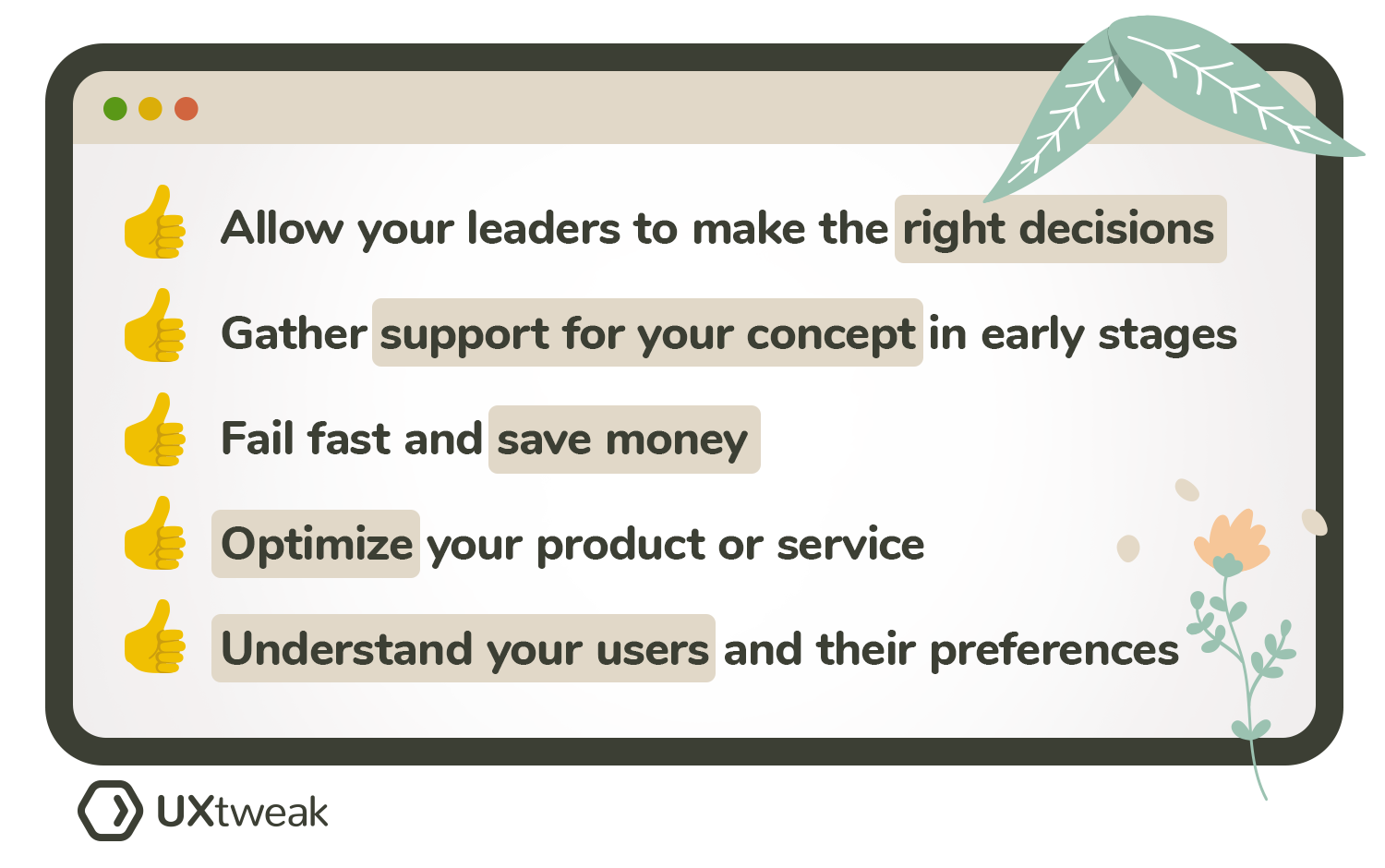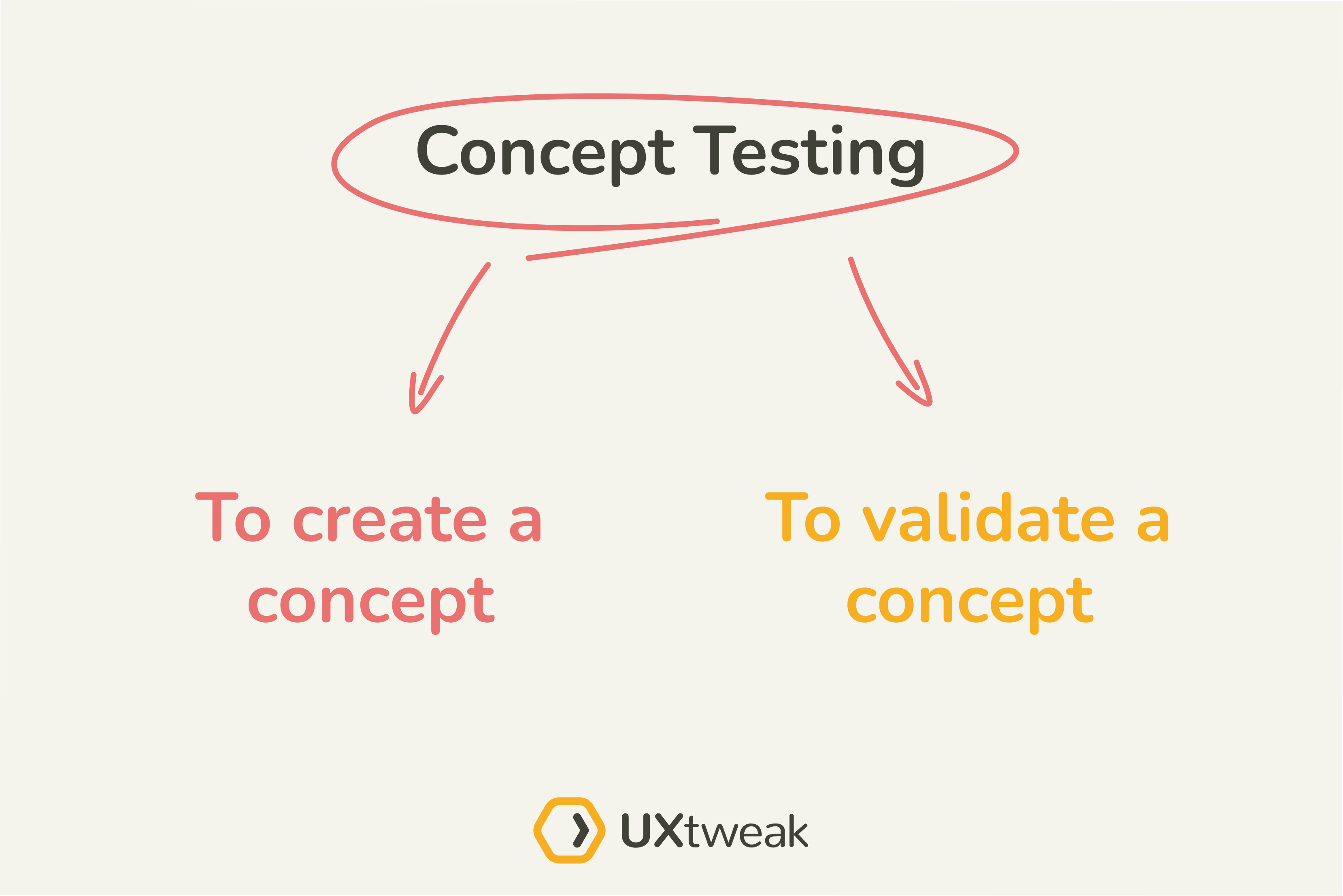Do you have an idea, a design or a product which you are 100% sure will be successful? That means you have either conducted some concept testing, or that you’re just guessing.
Stop all that wishful thinking, refine your product and allow your users to tell you what they actually want and need.
This guide will teach you how to ask the correct questions in a concept test survey, how to fit concept testing into your UX research, what is the best way to concept test your product and will introduce you to a few successful examples.
What is concept testing?
Concept testing is a research method used to evaluate your concepts, ideas, and designs. The core of concept testing is asking your future customers to share their opinions and preferences regarding your concept, in any stage of development. It can help you make the right decisions and avoid potential pitfalls.
What are the steps of concept testing?
Here’s how to conduct a concept test in 8 simple steps:
- Ideation: generation and concept definition.
- Research: learning more about the target market and competitors.
- Prototyping: making a basic model of the idea.
- Survey Design: creating survey questions to get information.
- Testing: distributing the questionnaire and gathering opinions.
- Analysis: analyzing data and examining the viability of the proposed idea.
- Refinement: changing the idea in response to criticism.
- Final Testing: testing the improved idea once more.
When to use concept testing?
If you’re reading this, you’ve probably gone through a similar scenario: Your company is fully invested in the creation and launch of a new product. Everyone wants to give their 2 cents, from managers, through product designers, even the interns.
However the most important voice often remains unheard – the voice of the customer.
Concept testing allows your product to be successful by appealing to the people it’s made for.
It doesn’t matter if your development has just begun or if you are nearing the finish line. Concept testing can be applied at any step of the road.
When you’re starting, you want to gather a list of general opinions, needs and pains of your users. A great way to do this is by using a concept survey – easily procured by UXtweak’s Survey Tool. To make sure you are asking the correct questions, check out our guide to concept testing surveys.
When you’re already further down the line, maybe you already have some alternatives of your designs prepared. That means it’s the perfect time to pit them against each other in a Preference Test.
Allow your future users to tell you what they want and why. Iterate over these tests until you’re sure you’ve hit the right note with your product.
Why use concept testing?

- Allow your leaders to make the right decisions
Don’t force your managers and team leaders (or yourself for that matter) to make decisions based on “gut feelings” or “anecdotal evidence”. Decisions like this are almost never a good idea. So why bet on a chance when you can decide based on solid evidence in the form of your own user feedback?
- Gather support for your concept in early stages
If you’re an intern or a junior employee, or if you have a stubborn boss (we have all been there) it can be hard to convince them to support your potentially great idea.
If your superiors are reasonable and explain to you why they refused your idea, it would most likely be something similar to this: “Prove me that we need it, prove me it’s worth the money”.
A simple survey with a set of wisely chosen questions is just what you need to prove your point.
- Fail fast and save money
According to Forbes and the Agile academy failing fast brings desired results faster than perfecting the solution.
Allow your bad ideas to fail as soon as possible and make space for the good ones. Test your concepts as soon as possible using a survey or a preference test and drop those, which don’t speak to your users.
- Optimize your product or service
Iterate, iterate and then iterate once more just to be sure. Making a perfect product on the first try is incredibly hard. Choose the easier option. Test your concepts, fix what can be fixed, test again and sooner than later your product will be near perfection.
- Understand your users and their preferences
We know we’ve mentioned this already, but it is important enough to deserve some repetition. To be honest, if you learn just one thing from reading this guide, it’s this: “Listen to the voice of your customer/user”. You are creating your product for them, not for you.
Concept testing and UX
Concept testing is a crucial part of UX research. It steps in at all times. To learn about it in detail, go to our Concept testing and UX guide.
In short, there are two cases which are the most prevalent:

Testing to create a concept
For this scenario tools such as Survey or an open Card Sorting are suited the best. In this phase, your main goal is to pick the brains of your users to gather as much unbiased information on their needs and thoughts as possible.
Testing of an already created concept
So you have already gathered some information from your users. You have created a concept of your product and now you are ready to test it.
You can test your proposed web structure using the Tree Test. Maybe you have a concept of your site’s information banner ready and you want to know if it pops well enough visually against the background – use Five Second or First Click tests to answer this question.
Can’t decide between multiple options? Leave it to your users and see what they pick in a Preference Test. Maybe you are a step further and have a more complex concept ready – then it’s a perfect time to use Prototype Testing.
What is the difference between concept testing and usability testing?
Usability testing and concept testing are two different ways of measuring the effectiveness and UX of products and services.
Concept testing analyzes a core idea or prototype to examine its viability. It focuses on determining the requirements of the intended audience and how interested they are in the idea.
On the other hand, usability testing focuses on assessing the user experience of an existing product or service (or its prototype). The purpose of usability testing is to find usability problems and collect opinions on the overall look, functionality, and user-friendliness of the product.
In conclusion, usability testing is a method for determining the usability of an existing product or service, whereas concept testing is a method for assessing the viability of an initial idea.
Concept testing and marketing
When you look at the concept testing from the point of view of the market research, it would be classified as one of the early research methods.

